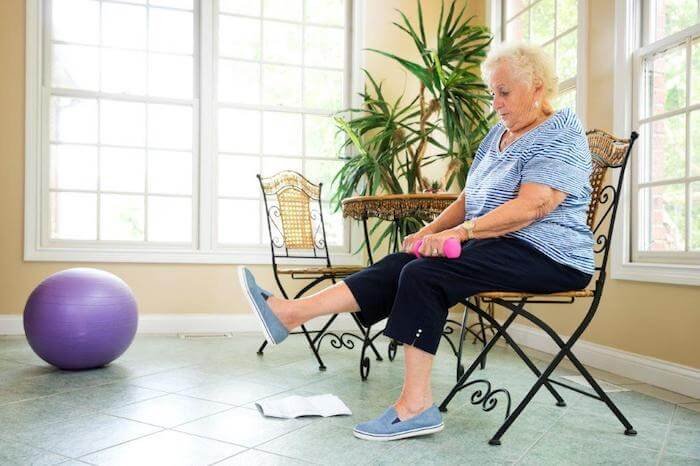As people age, maintaining mobility becomes increasingly important for their independence and overall well-being. Unfortunately, many elderly individuals face mobility issues due to conditions like arthritis, stroke, or general muscle weakness. However, rehabilitation for elderly patients with mobility issues plays a crucial role in improving their quality of life. By focusing on physical therapy and tailored rehabilitation programs, older adults can regain strength, enhance balance, and increase their ability to perform daily activities. In this article, we’ll explore how rehabilitation helps elderly patients overcome mobility challenges.

1. Restores Strength and Flexibility
One of the primary goals of rehabilitation for elderly patients with mobility issues is to restore strength and flexibility. As people age, muscle mass naturally decreases, which can lead to weakness and difficulty moving. Rehabilitation programs, such as physical therapy, focus on exercises that strengthen muscles, improve joint flexibility, and restore mobility. These exercises are designed to be gentle yet effective, ensuring that older adults can gradually rebuild strength without risking injury. By improving muscle strength and flexibility, elderly patients can perform daily tasks, such as walking, climbing stairs, or getting out of bed, more easily.
2. Improves Balance and Coordination
Balance problems are common among elderly individuals, often leading to falls and injuries. Rehabilitation plays a key role in improving balance and coordination. Through specific exercises and therapy techniques, elderly patients can strengthen the muscles that support their balance. These exercises might include standing on one leg, walking in a straight line, or practicing steps with support. Additionally, physical therapists can teach patients strategies to improve posture and movement patterns, which reduce the risk of falls. Improving balance not only increases independence but also provides elderly patients with greater confidence in their daily activities.
3. Reduces Pain and Discomfort
Many elderly patients suffer from pain due to arthritis, joint problems, or past injuries, all of which can make mobility difficult. Rehabilitation for elderly patients with mobility issues often includes pain management techniques to help reduce discomfort. Physical therapists can use various methods, such as massage, heat or cold therapy, and joint mobilizations, to help manage pain. Additionally, rehabilitation can include exercises that strengthen muscles around painful joints, providing better support and reducing the stress on those areas. By alleviating pain, rehabilitation allows elderly individuals to move more freely and comfortably.
4. Promotes Independence
One of the most significant benefits of rehabilitation for elderly patients with mobility issues is the increased level of independence it provides. Many older adults rely on caregivers or family members for help with daily tasks like walking, dressing, or bathing. Through rehabilitation, elderly individuals can regain the strength, balance, and confidence needed to complete these tasks on their own. Therapy programs can be tailored to address the specific needs of each patient, helping them achieve their personal goals. Whether it’s walking to the store or simply moving around the house without assistance, rehabilitation helps seniors become more independent and self-sufficient.
5. Enhances Mental and Emotional Health
Rehabilitation isn’t just about improving physical mobility; it also has a positive impact on mental and emotional health. For elderly patients who experience mobility issues, feelings of frustration, anxiety, or depression can arise. The inability to perform daily tasks or maintain independence can take a toll on mental well-being. However, as patients see improvements in their mobility and strength through rehabilitation, their confidence and sense of achievement grow. This leads to a better outlook on life and a reduction in feelings of isolation or depression. Moreover, the social aspect of attending therapy sessions, whether in a group or one-on-one, provides emotional support, helping elderly individuals stay connected and engaged.
6. Prevents Further Decline
Without rehabilitation, elderly patients with mobility issues may experience further decline in their physical abilities. Muscles can weaken, joints can become stiffer, and balance issues may worsen. Rehabilitation for elderly patients with mobility issues helps prevent this cycle of decline by maintaining and improving function. Regular therapy can keep muscles active, joints flexible, and balance stable, reducing the risk of further impairment. Early intervention is particularly important to prevent long-term complications and ensure the elderly patient maintains as much independence as possible.
7. Tailored Programs for Specific Needs
Rehabilitation programs for elderly patients with mobility issues are not one-size-fits-all. A trained physical therapist works closely with each patient to create a customized rehabilitation plan that addresses their unique needs and abilities. Whether the issue is arthritis, stroke recovery, or simply age-related muscle weakness, the program will be designed to target the specific areas that need improvement. Tailored therapy ensures that elderly patients receive the most effective treatment for their condition, helping them progress at their own pace and achieve the best possible results.
Conclusion
Rehabilitation for elderly patients with mobility issues is essential for improving physical health, maintaining independence, and enhancing overall well-being. Through strength-building exercises, balance training, pain management, and personalized care, elderly patients can regain mobility and feel more confident in their daily lives. Early intervention and consistent therapy help prevent further decline and improve the quality of life for older adults. If you or a loved one is struggling with mobility issues, consider seeking professional rehabilitation services to help regain strength, balance, and independence.











